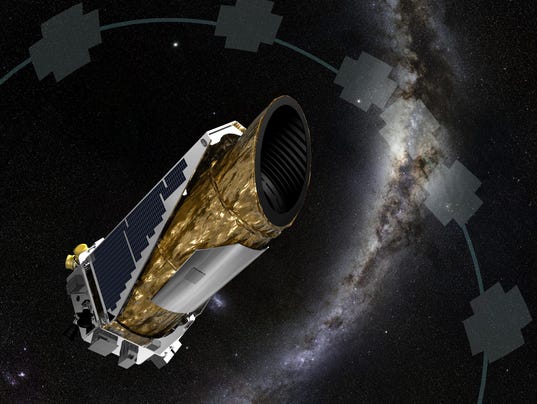Strict Standards: Only variables should be assigned by reference in /home/noahjames7/public_html/modules/mod_flexi_customcode/tmpl/default.php on line 24
Strict Standards: Non-static method modFlexiCustomCode::parsePHPviaFile() should not be called statically in /home/noahjames7/public_html/modules/mod_flexi_customcode/tmpl/default.php on line 54
Strict Standards: Only variables should be assigned by reference in /home/noahjames7/public_html/components/com_grid/GridBuilder.php on line 29
Strange light emitting from a distant star has astronomers and people in the scientific community scratching their heads.
Is a megastructure created by an alien civilization diverting the light to create energy? Or is it just leftover particles from an asteroid belt? Maybe, a technical glitch?
The only sure thing about the star, called KIC 8462852, seems to be uncertainty.
Spotted by NASA's Kepler Space Telescope in 2009, the strange light pattern emitted from the star has puzzled many over the years, The Atlantic reported.
“You see all sorts of weird stuff in space, but you start to recognize general patterns and can attribute certain shapes of light curves to different phenomena, but this star was unlike anything we’d ever seen,” Tabetha Boyajian, a postdoctoral fellow at Yale specializing in astronomy, told USA TODAY Network.
Kepler hunts for Earth-like planets in the Milky Way Galaxy and since launching in 2009 has found over a thousand planets. The planet-hunting telescope monitors the brightness of stars and looks for tiny dips in light patterns that could signify an orbiting planet.
But while there is a consistent pattern for many stars, the light pattern emitting from KIC 8462852 doesn't follow the normal model.
Several years ago, the star was flagged as "interesting," by members of Planet Hunters, a group that relies on citizen scientists to analyze Kepler data, according to Boyajian, who oversees the group.
The pattern of light suggests a large mass of matter is circling the star. That would be normal for a young star that might be surrounded by dust and particles but not for an older star like KIC 8462852, Boyajian said.
Boyajian recently published a paper in collaboration with other astronomers and citizen scientists on the "various scenarios" that could cause the "mysterious events in the Kepler light curve."
“We went through a dozen scenarios at least, pretty much everything we could think of, even if it only slightly related to something that could look like this star,” Boyajian said.
She noted that the article published in the Monthly Notices of the Royal Astronomical Society purposely did not investigate alien theories.
The most "compelling" scenario was that another star passed through the strange star's system, causing a clump of comets, which could have caused the strange light pattern.
But, the scientists note that the majority of their scenarios "have problems explaining the data in hand," and the exocomet scenario isn't infallible.
Enter the alien theory.
While Boyajian's report focuses on the potential natural causes for the light pattern, some astronomers are questioning whether the answer to the pattern may lie not in science but in extraterrestrial life.
The light pattern is consistent with a "swarm of megastructures," possibly created to capture energy from the star, according to Jason Wright, an astronomer from Penn State University, The Atlantic reported.
"Aliens should always be the very last hypothesis you consider, but this looked like something you would expect an alien civilization to build," Wright told the organization.
Boyajian said she showed the mysterious star's light curve to Wright, who suggested they team up with Andrew Siemion, the Director of SETI (The Search for Extra-Terrestrial Intelligence), at the University of California, Berkeley, to investigate what role extraterrestrial life might play.
The trio submitted a proposal that if granted would allow the group to point a massive radio dish at the star and see if it emits wavelengths consistent with coming from a technological source.
The quest to uncover the star's mystery comes months after SETI received a large injection from a Russian internet billionaire, Yuri Milner,Popular Mechanics reports.
The funds will beef up radio telescopes in West Virginia and Australia that have been quietly listening for radio signals from outer space for a half-century in hopes of finding intelligent life.
If everything goes according to plan, the scientists are hoping the first observation will take place in January, The Atlantic reported.
Contributing: Doug Stanglin, USA TODAY
Follow @MaryBowerman on Twitter.
Read or Share this story: http://usat.ly/1LvYpL1
Strict Standards: Only variables should be assigned by reference in /home/noahjames7/public_html/modules/mod_flexi_customcode/tmpl/default.php on line 24
Strict Standards: Non-static method modFlexiCustomCode::parsePHPviaFile() should not be called statically in /home/noahjames7/public_html/modules/mod_flexi_customcode/tmpl/default.php on line 54
Find out more by searching for it!

